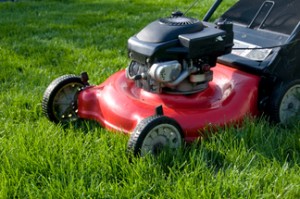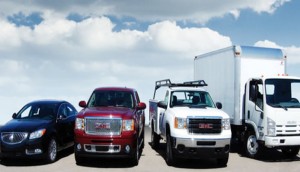 There is a clear link between a well-managed vehicle fleet and profitability. With more than 90 percent of crashes caused by human error (per the National Safety Council or NSC) creating a Fleet Safety plan will help your bottom line! A documented Fleet Safety plan pays off in multiple fashions – tangible benefits are a reduction of vehicle maintenance, downtime, and increased fuel efficiency. Intangible advantages could be increase in employee satisfaction, owner’s peace of mind with a documented process to follow.
There is a clear link between a well-managed vehicle fleet and profitability. With more than 90 percent of crashes caused by human error (per the National Safety Council or NSC) creating a Fleet Safety plan will help your bottom line! A documented Fleet Safety plan pays off in multiple fashions – tangible benefits are a reduction of vehicle maintenance, downtime, and increased fuel efficiency. Intangible advantages could be increase in employee satisfaction, owner’s peace of mind with a documented process to follow.
Lawn Mower Safety
- Wear sturdy closed-toe shoes with slip-proof soles, close-fitting clothes, safety goggles or glasses with side shields, and hearing protection.
- Watch for objects that could be picked up and thrown by the mower blades, as well as hidden dangers. Tall grass can hide objects, holes or bumps. Use caution when approaching corners, trees or anything that might block your view.
- If the mower strikes an object, stop, turn the mower off, and inspect the mower. If it is damaged, do not use it until it has been repaired.
- Do not pull the mower backwards or mow in reverse unless absolutely necessary, and carefully look for children behind you when you mow in reverse.
- Use extra caution when mowing a slope. When a walk-behind mower is used, mow across the face of slopes, not up and down, to avoid slipping under the mower and into the blades. With a riding mower, mow up and down slopes, not across, to avoid tipping over.
- Keep in mind that lawn trimmers also can throw objects at high speed.
- Remain aware of where children are and do not allow them near the area where you are working. Children tend to be attracted to mowers in use.
Powers Tools
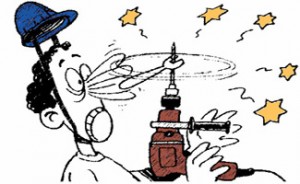 Power tools such as impact wrenches, pneumatic nail guns and screwguns make many workplace tasks easier and more efficient. Because they have become so commonplace in today’s workplace, however, workers are not only exposed to a variety of hazards posed by power tools, but constant use makes it easy to forget those hazards.
Power tools such as impact wrenches, pneumatic nail guns and screwguns make many workplace tasks easier and more efficient. Because they have become so commonplace in today’s workplace, however, workers are not only exposed to a variety of hazards posed by power tools, but constant use makes it easy to forget those hazards.
And while employers are responsible for the safe condition of tools and equipment in the workplace, workers are responsible for properly using and maintaining tools.
During your next workplace safety training session, remind power tool users of these general precautions for operating power tools
Take time to unwind…Stress Awareness
 It’s healthy to relax, renew, and rejuvenate
It’s healthy to relax, renew, and rejuvenate
Stress happens. Sometimes it’s unavoidable, at times it’s unbearable. That’s why taking time for yourself is a necessity.
Stress does not merely afflict your mind; it can also affect you on a cellular level. In fact, long-term stress can lead to a wide range of illnesses – from headaches to stomach disorders to depression – and can even increase the risk of serious conditions like stroke and heart disease. Understanding the mind/stress/health connection can help you better manage stress and improve your health and well-being.
via Stress Awareness.
OSHA announces Top 10 most-cited violations for 2014
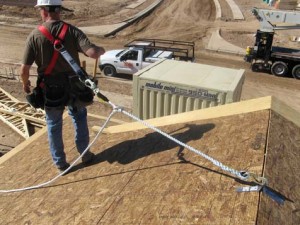 For the fourth year in a row, OSHA’s Fall Protection Standard (1926.501) is the agency’s most frequently cited violation.
For the fourth year in a row, OSHA’s Fall Protection Standard (1926.501) is the agency’s most frequently cited violation.
The entire list is as follows:
- Fall Protection in Construction (1926.501)
- Hazard Communication (1910.1200)
- Scaffolding in Construction (1926.451)
- Respiratory Protection (1910.134)
- Lockout/Tagout (1910.147)
- Powered Industrial Trucks (1910.178)
- Electrical – Wiring Methods (1910.305)
- Ladders in Construction (1926.1053)
- Machine Guarding (1910.212)
- Electrical – General Requirements (1910.303)
via OSHA announces Top 10 most-cited violations for 2014 | 2014-09-16 | Safety+Health Magazine.
Skin Cancer Prevention
 Traveling for spring break? Don’t forget to pack, protect yourself from the sun, and go!
Traveling for spring break? Don’t forget to pack, protect yourself from the sun, and go!
Don’t risk ruining your trip or your health with too much sun.
Using sun protection can prevent sunburn during your vacation and protect you against skin cancer later. Nearly 5 million people are treated for skin cancer each year in the United States. Skin cancer can be serious, expensive, and sometimes even deadly. Fortunately, most cases are preventable, and as a traveler, you can use simple strategies to keep yourself and your family safe from the sun.
Work Environment and Managers Key to Mental Health
 A recent Unum study found that work environment has a significant impact on an employee’s absence from work due to behavioral health issues. The research also found it to be the leading barrier employees face when returning to work.
A recent Unum study found that work environment has a significant impact on an employee’s absence from work due to behavioral health issues. The research also found it to be the leading barrier employees face when returning to work.
“The current culture of the American workplace is operating on a ‘do more with less’ mentality,” explains Dr. Kristin Tugman, PhD, assistant vice president of Health and Productivity at Unum. “This is creating a workforce that is struggling with presenteeism and lack of engagement, as well as an unbalanced work/life structure. As a result, employees are faced with more workplace stress than ever before.”
And that is having a negative effect on an employer’s bottom line: 41 percent of employees lose 15 to 30 minutes of productivity a day and 36 percent lose one hour or more as a result of workplace stress.
That stress can also be compounded by additional factors such as employee performance issues. The research showed that for some employees the stress of performance expectations becomes too great and they’re not able to persevere, so instead they go out on leave due to stress.
“The flip side to that is the negative stigma that is often associated with leave or disability, especially when the absence from work is due to a mental health issue,” said Tugman. “This stigma becomes a barrier too, causing employees to either be afraid to seek help or to take leave.”
These factors, in addition to workplace stress, contribute to presenteeism, or being at work but with an inability to perform at full capacity. And that can be bad news for employers too because currently presenteeism costs the United States approximately $150 billion a year.
via Work environment and managers key to mental health stability and wellness of employees.
Is your smoke alarm still working?
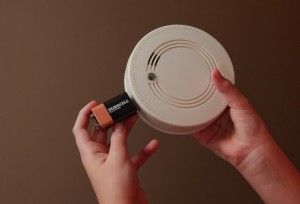 A smoke alarm with a dead or missing battery is the same as having no smoke alarm at all. A smoke alarm only works when it is properly installed and regularly tested. Take care of your smoke alarms according to the manufacturer’s instructions. Below are some general maintenance tips.
A smoke alarm with a dead or missing battery is the same as having no smoke alarm at all. A smoke alarm only works when it is properly installed and regularly tested. Take care of your smoke alarms according to the manufacturer’s instructions. Below are some general maintenance tips.
Smoke alarm powered by a nine-volt battery
- Test the alarm monthly.
- Replace the batteries at least once every year.
- Replace the entire smoke alarm every 10 years.
Smoke alarm powered by a 10-year lithium (or “long-life”) battery
- Test the alarm monthly.
- Since you cannot (and should not) replace the lithium battery, replace the entire smoke alarm according to the manufacturer’s instructions.
Smoke alarm that is hardwired into your home’s electrical system
- Test the alarm monthly.
- Replace the backup battery at least once every year.
- Replace the entire smoke alarm every 10 years.
Machine Safety
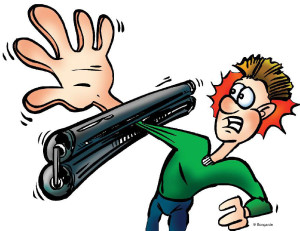 Machines can assist in improving production efficiency in the workplace. However these machines have moving parts, sharp edges, and hot surfaces with the potential to cause severe workplace injuries such as crushed fingers or hands, amputations, burns, or blindness. Safeguards are essential for protecting workers from these preventable injuries. Any machine part, function, or process that might cause injury must be safeguarded. When the operation of a machine may result in a contact injury to the operator or others in the vicinity, the hazards must be eliminated or controlled.
Machines can assist in improving production efficiency in the workplace. However these machines have moving parts, sharp edges, and hot surfaces with the potential to cause severe workplace injuries such as crushed fingers or hands, amputations, burns, or blindness. Safeguards are essential for protecting workers from these preventable injuries. Any machine part, function, or process that might cause injury must be safeguarded. When the operation of a machine may result in a contact injury to the operator or others in the vicinity, the hazards must be eliminated or controlled.
via CDC – Machine Safety – NIOSH Workplace Safety and Health Topic.
Staying Safe at the Pump
 Static electricity-related incidents at retail gasoline outlets are extremely unusual, but the potential for them to happen appears to be the highest during cool or cold and dry climate conditions. In rare circumstances, these static related incidents have resulted in a brief flash fire occurring at the fill point. Consumers can take steps to minimize these and other potential fueling hazards by following safe refueling procedures all year long.
Static electricity-related incidents at retail gasoline outlets are extremely unusual, but the potential for them to happen appears to be the highest during cool or cold and dry climate conditions. In rare circumstances, these static related incidents have resulted in a brief flash fire occurring at the fill point. Consumers can take steps to minimize these and other potential fueling hazards by following safe refueling procedures all year long.
Most important, motorists should not get back into their vehicles during refueling. It may be a temptation to get back in the car for any number of reasons. But the average fill-up takes only two minutes, and staying outside the vehicle will greatly minimize the likelihood of any build-up of static electricity that could be discharged at the nozzle.
A build-up of static electricity can be caused by re-entering a vehicle during fueling, particularly in cool or cold and dry weather. If the motorist then returns to the vehicle fill pipe during refueling, the static may discharge at the fill point, causing a flash fire or small sustained fire with gasoline refueling vapors.
Motorists who cannot avoid getting back into the vehicle should always first touch a metal part of the vehicle with a bare hand, such as the door, or some other metal surface, away from the fill point upon exiting the vehicle.

